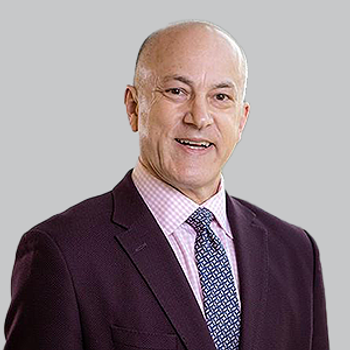
Pitolisant Shows Effectiveness as Treatment for Pediatric Narcolepsy
Data showed improvement in excessive daytime sleepiness and cataplexy frequency for children with narcolepsy on pitolisant.
Results from a recent multicenter, retrospective, observational study published in Sleep Medicine demonstrated pitolisant (Wakix, Harmony Biosciences) as an effective treatment for excessive daytime sleepiness (EDS) and cataplexy in children with narcolepsy.1 These findings suggest that the agent, an inverse histamine 3 receptor agonist, has potential for being a first-line treatment option, considering the lack of effective therapeutic medications for children with narcolepsy.
Among 55 patients with narcolepsy treated with pitolisant, the Pediatric Epworth Sleepiness Scale (ESS) score decreased from 19.0 to 13.5 (P <.001) and weekly cataplexy frequency increased from 7.9 to 5.2 (P <.001). Treatment with the therapy was well, as 10 patients had adverse effects, including 5.5% who frequently reported insomnia, followed by nausea and gastric discomfort (both, 3.64%), as well as agitation, dry mouth and nervousness (all, 1.82%).
Senior author Ulf Kallweit, MD, assistant professor of neurology at the University Witten/Herdecke, Germany, and colleagues wrote, “this work suggests a good benefit-risk profile in children and adolescents with narcolepsy, especially due to the favorable safety profile. Particularly there is no cardiovascular risk for pitolisant, in contrast to stimulants. Combining pitolisant also with other medication is safe and feasible when required by clinical judgement.”1
The study analyzed 25 girls (45.4%) and 30 boys (54.5%) aged between 6 and 18 years with narcolepsy (type 1 = 92.7%, type 2 = 7.3%) treated with pitolisant (average dose, 34.1 mg/d). Patients were recruited from 3 international narcolepsy centers based in Germany (n = 19), France (n = 4) and Italy (n = 32) between July 2020 and December 2021. Collection of data comprised of demographic and clinical characteristics, questionnaires, sleep medicine and laboratory data.
Following pitolisant treatment, pediatric ESS scores significantly reduced by 28.95% and a few patients (n = 7) reported a deterioration of ESS by an average of 2.3 points. Patients with an ESS score of 16 or higher prior to pitolisant treatment had the greatest effect observed, with reductions of 34.74% in ESS. The moderately affected patients with 11–20 cataplexy attacks per week had a reduction of 40.54%, and a slightly increased reduction was observed in those aged 12 to 18 years (36.23%) versus those aged 6 to 12 years old (31.21%).
READ MORE: Polysomnography More Commonly Used in Narcolepsy Detection Prior to Multiple Sleep Latency Test
The drug naïve group had a significant reduction of 41.52% in pediatric ESS scores and a significant reduction of 41.61% in cataplexy frequency per week. Cataplexy frequency per week decreased by 50.05% (p = 0.007) in children on sodium oxybate (n = 9) and by 25.57% (p = 0.52) in children on pitolisant monotherapy (n = 7). Thirty-seven patients had mild disturbed night sleep and 13 patients had severe disturbed night sleep before pitolisant treatment. Thirty-four (61.82%) patients were given other pharmacological treatment for narcolepsy prior pitolisant. Previous therapy with pitolisant was continued in 31 patients, most common being sodium oxybate, followed modafinil in addition to pitolisant.
Considering limitations, the study focused on clinical data such as dosing and other combined medications which was conducted based on physician judgement without a standardized schedule. In addition, no tests such as polysomnography and MWT were performed to objectively quantify efficacy of pitolisant in EDS. No psychological or functional other measures were gathered for assessment. Patients and parents self-reported side effects including any abnormalities in routine laboratory testing, ECG or blood pressure measurements. Other notable limitations were that the study is not double blinded, had no controls, and did not compare other treatments.
Efficacy with pitolisant was consistent with study findings in adults patients with narcolepsy. For example, the Harmony I study displayed a 5.8-point mean reduction on ESS vs. placebo (−3.4) and the Harmony CTP trial had a 64% reduction in weekly cataplexy rate.2,3
“Pitolisant is well suited for pediatric patients due to its easy once daily dosing,” Kallweit and colleagues noted in conclusion. “Further randomized controlled trials on the safety and efficacy of pitolisant alone and in comparison with other drugs are needed to confirm these results.”1
REFERENCES
1. Triller A, Pizza F, Lecendreux M, et al. Real-world treatment of pediatric narcolepsy with pitolisant: A retrospective, multicenter study. Sleep Med. 2023;103:62-68. doi:10.1016/j.sleep.2023.01.015
2. Dauvilliers Y, Bassetti C, Lammers GJ, et al. Pitolisant versus placebo or modafinil in patients with narcolepsy: a double-blind, randomised trial. Lancet Neurol. 2013;12(11):1068-1075. doi:10.1016/S1474-4422(13)70225-4
3. Szakacs Z, Dauvilliers Y, Mikhaylov V, et al. Safety and efficacy of pitolisant on cataplexy in patients with narcolepsy: a randomised, double-blind, placebo-controlled trial. Lancet Neurol. 2017;16(3):200-207. doi:10.1016/S1474-4422(16)30333-7
Newsletter
Keep your finger on the pulse of neurology—subscribe to NeurologyLive for expert interviews, new data, and breakthrough treatment updates.



































